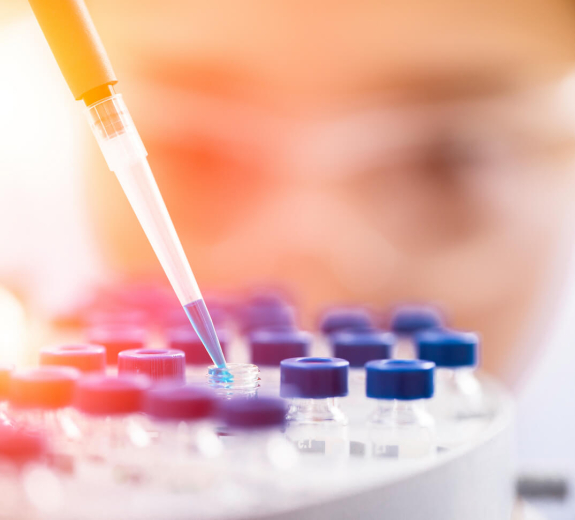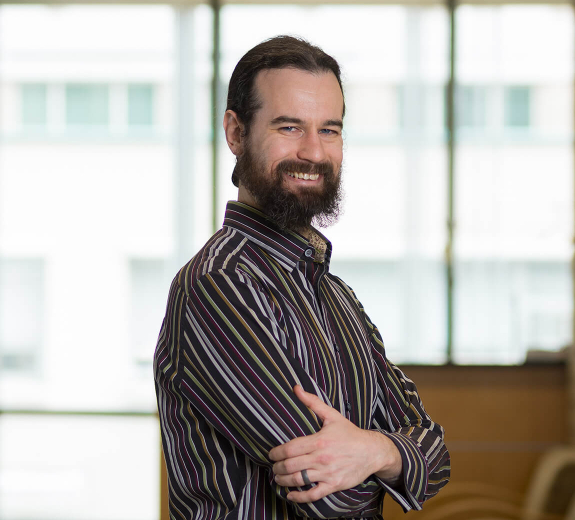They’ll use spatial transcriptomics to look at samples from multiple people with scleroderma, sampling one area of skin that shows symptoms (skin that’s thick, waxy and sometimes a different color than unaffected skin) and another area not showing signs of disease in the same person. They plan to directly compare these affected and unaffected samples side-by-side with healthy donor tissue to learn more about how the disease impacts human skin.
“Many doctors believe that the changes in the skin that lead to scleroderma happen long before they actually see symptoms. This technology could help reveal underlying evidence of the disease that you can’t see with the naked eye and that don’t yet show up on clinical screenings,” Dr. Morawski says. “We hope to piece together a more complete story of how things go wrong to help us know where to intervene and ultimately create better therapies that might slow down, reverse or potentially even cure disease.”
Studying tissue to improve IBD treatments
A medicine called vedolizumab can lead to remission for some people with inflammatory bowel diseases (IBD) like Crohn’s disease and ulcerative colitis. This means long periods without stomach pain, digestive problems and other sometimes debilitating IBD symptoms. But this medicine doesn’t work for everyone. And with all IBD medicines, there’s no way to know which one will work for which person, other than a painstaking process of trying different treatments and seeing if they work. James Lord, MD, PhD, is working to change that — and studying tissue is a key part of his research.
“The tissue is where immune cells cause the disease, so sampling tissue allows us to catch these immune cells in the act,” Dr. Lord says. “We can safely and easily collect cells from colon tissue during colonoscopies, which are often part of IBD care.”
Experts thought vedolizumab worked by slowing down immune cells called T cells. But Dr. Lord’s team discovered that it actually targets dendritic cells, a different type of immune cell. Now, with a new NIH grant, Dr. Lord’s team is zeroing in on dendritic cells in blood and tissue samples from people taking vedolizumab for IBD, to see what is unique about the dendritic cells in people who benefit from this treatment.
“We want to examine how dendritic cells in the blood interact with vedolizumab to prevent them from going to the colon in some, but not all patients,” Dr. Lord says. “This can help us predict which patients it will or won’t help. It can also teach us exactly how this medicine works and thus how IBD happens in the first place.”





